Action Potential
Action potential refers to the brief electrical impulse that transmits signals along the neurons or nerve cells. This process is crucial for the communication within the nervous system and is responsible for various physiological processes, including muscle contraction, sensory perception, and cognitive functions.
Key Concepts to Understand:
- Resting Potential: The resting potential of a neuron is the electrical charge across the neuronal membrane when the neuron is not being stimulated.
- Threshold: The level of depolarization needed to trigger an action potential.
- Depolarization: The process by which the electrical potential across the cell membrane decreases, making the inside of the cell less negative relative to the outside.
- Repolarization: The process by which the membrane potential is restored to its resting state after depolarization.
- Hyperpolarization: The change in a cell's membrane potential that makes it more negative.
Process of Action Potential:
- Resting State: The neuron is at rest, and the inside of the cell is negatively charged compared to the outside.
- Depolarization: When a stimulus causes the cell to depolarize, sodium channels open, allowing sodium ions to rush into the cell, making the interior more positive.
- Action Potential: If the depolarization reaches the threshold, voltage-gated sodium channels open rapidly, causing a rapid influx of sodium ions and a reversal of the membrane potential, resulting in the generation of an action potential.
- Repolarization: After reaching its peak, the sodium channels close, and potassium channels open, allowing potassium ions to leave the cell, repolarizing the membrane.
- Hyperpolarization: In some cases, the membrane potential becomes more negative than the resting potential before returning to its resting state.
Factors Affecting Action Potential:
- The presence of myelin sheath can increase the speed of action potential conduction.
- Temperature can affect the speed of action potential transmission.
- Concentration of ions, such as sodium and potassium, can impact the generation and propagation of action potentials.
Study Guide:
Use the following study guide to review and reinforce your understanding of action potential:
- What is the resting potential of a neuron and how is it maintained?
- Describe the process of depolarization and the role of sodium ions in generating an action potential.
- Explain the significance of the threshold in the generation of action potential.
- Compare and contrast repolarization and hyperpolarization.
- Discuss the impact of myelin sheath on the conduction of action potential.
- Identify and explain the factors that can affect the speed of action potential transmission.
◂Science Worksheets and Study Guides Sixth Grade. Mollusks, Arthropods and Echinoderms
Study Guide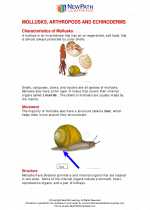 Mollusks, Arthropods and Echinoderms
Mollusks, Arthropods and Echinoderms  Activity Lesson
Activity Lesson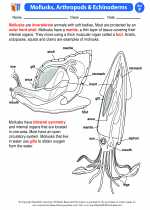 Mollusks, Arthropods & Echinoderms
Mollusks, Arthropods & Echinoderms  Worksheet/Answer key
Worksheet/Answer key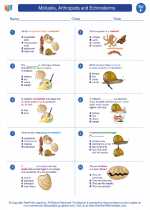 Mollusks, Arthropods and Echinoderms
Mollusks, Arthropods and Echinoderms  Worksheet/Answer key
Worksheet/Answer key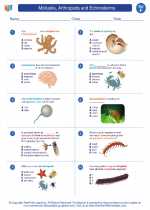 Mollusks, Arthropods and Echinoderms
Mollusks, Arthropods and Echinoderms  Worksheet/Answer key
Worksheet/Answer key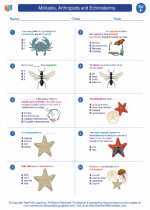 Mollusks, Arthropods and Echinoderms
Mollusks, Arthropods and Echinoderms  Worksheet/Answer key
Worksheet/Answer key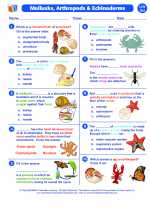 Mollusks, Arthropods and Echinoderms
Mollusks, Arthropods and Echinoderms  Vocabulary/Answer key
Vocabulary/Answer key Mollusks, Arthropods and Echinoderms
Mollusks, Arthropods and Echinoderms  Vocabulary/Answer key
Vocabulary/Answer key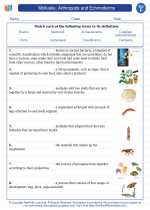 Mollusks, Arthropods and Echinoderms
Mollusks, Arthropods and Echinoderms  Vocabulary/Answer key
Vocabulary/Answer key Mollusks, Arthropods and Echinoderms
Mollusks, Arthropods and Echinoderms  Vocabulary/Answer key
Vocabulary/Answer key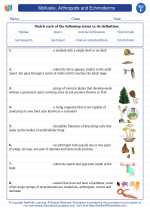 Mollusks, Arthropods and Echinoderms
Mollusks, Arthropods and Echinoderms  Vocabulary/Answer key
Vocabulary/Answer key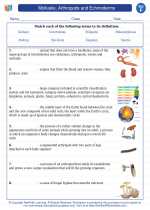 Mollusks, Arthropods and Echinoderms
Mollusks, Arthropods and Echinoderms  Vocabulary/Answer key
Vocabulary/Answer key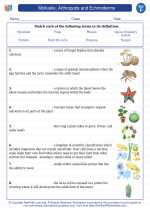 Mollusks, Arthropods and Echinoderms
Mollusks, Arthropods and Echinoderms  Vocabulary/Answer key
Vocabulary/Answer key Mollusks, Arthropods and Echinoderms
Mollusks, Arthropods and Echinoderms 

 Activity Lesson
Activity Lesson
 Worksheet/Answer key
Worksheet/Answer key
 Worksheet/Answer key
Worksheet/Answer key
 Worksheet/Answer key
Worksheet/Answer key
 Worksheet/Answer key
Worksheet/Answer key
 Vocabulary/Answer key
Vocabulary/Answer key
 Vocabulary/Answer key
Vocabulary/Answer key
 Vocabulary/Answer key
Vocabulary/Answer key
 Vocabulary/Answer key
Vocabulary/Answer key
 Vocabulary/Answer key
Vocabulary/Answer key
 Vocabulary/Answer key
Vocabulary/Answer key
 Vocabulary/Answer key
Vocabulary/Answer key

The resources above cover the following skills:
LIFE SCIENCE
From Molecules to Organisms: Structures and Processes